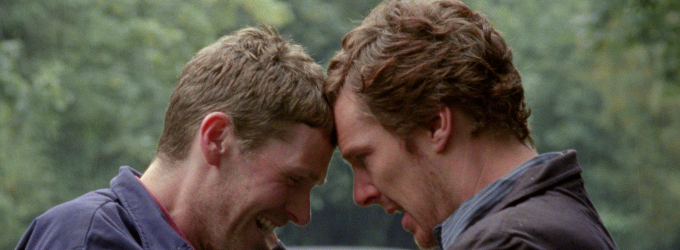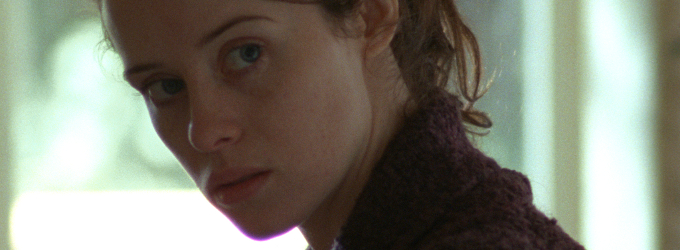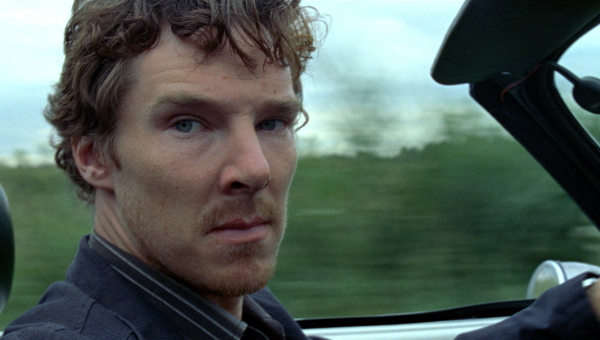Talking to director DR Hood about her film WRECKERS in the confines of a Soho café seems odd. It’s her choice of venue. Walls loom close, stale air coagulates and artificial light flickers. Perhaps we should feel claustrophobic here. Regardless, the conversation flows fast. It’s a world away from her film’s shooting location, the fenland village of Isleham, with its drove roads, waterways and hundred-mile high skies.
A writer-director in the auteur-mode, Hood wedges a married couple within those endless horizons in her film and opens the floodgates. The couple in question, played by Benedict Cumberbatch and Claire Foy, return to the unnamed village the husband grew up in, to settle down and start a family. Conflict arises with the return of the husband’s brother (played by Shaun Evans) from the army as the past threatens the settled order.
WRECKERS’ major accomplishment, particularly for a first-time feature, lies in its ambiguity. Foy’s character Dawn can’t quite be sure of what’s gone before between her husband David and his brother Nick. Building on her script that continually withholds the past from both Dawn and the audience, Hood plays on this often by shooting the brothers conspiring inaudibly out of focus. “Because the performances are so subtle we were able to make the edit very ambiguous even though we could have been more on the nose with the edit.” Hood enjoys audience speculation on what actually happens in the film’s final act. She teases me with the prospect of an alternate ending tucked away somewhere, so secret that it didn’t even make it onto the DVD.

Hood enjoys audience speculation on what actually happens in the film’s final act. She teases me with the prospect of an alternate ending tucked away somewhere, so secret that it didn’t even make it onto the DVD.
A stray question about Benedict Cumberbatch’s improvising starts to dredge more up on how complete Hood’s vision was. Avoiding the upper middle class roles he normally plays, Cumberbatch seizes the chance given to do the acting equivalent of being an iceberg: vast swathes of his character remain hidden, emerging occasionally as emotions cause him to keel.
Hood, clearly prepossessing the sparse style she wanted to promote in the script, pared back much of the actors’ improvised dialogue in the edit. “There are places where they are improvising with dialogue where I think silence would have done just as well and I could have asked the actors to be more comfortable with being uncomfortable – in silence… So within the set I think the improvisation is a double-edged sword. Beforehand in rehearsal I think it can be a really important tool for developing character and relationship.“ Notably Hood singled Foy out in auditions precisely for her ability to react rather than pro-act. “She was the only one who just waited rather than looking at her watch and all sorts of other things. Her face is so expressive that she’s a channel for us on the action.”
Yet improvisation on the non-verbal sides of the characters created the film’s notably naturalistic performances. Little things like the stubble both Cumberbatch and Evans sport in the film, or Cumberbatch’s slightly removed fenland accent build and build. Following the more physical side of what actors brought to her script Hood describes how Foy suggested including an old piano as her character was a music teacher. The art department found one and the shot of Foy tentatively tinkering away on a discordant piano had far reaching consequences, influencing the film’s composer Andrew Lovett. “He [Lovett] says that the whole sort of idea of this little love-song-theme that’s going on on the piano in some of the shots, and a lot of the rest of the music, is from that shot”. With another of those vague fenland links that surrounds Hood, Lovett actually resided in Cambridge for some years before moving to America.
Later in the interview Hood brings up a quote about the fens lying on shifting ground. It feels appropriate. Naturally Hood chose Isleham meticulously. “I wanted a village that was not too twee, that was a functioning agricultural village, which is actually quite hard to find nowadays.” She found it all there, with the additional bonus of having air force bases like Lakenheath close by. Occasional shots of fighter jets banking overhead play that typical fenland trick of being far away yet close by, doubly so given the brother’s military background.

“It’s all those misheard, overheard things that I heard about when I was small.”
The nucleus of WRECKERS arose from Hood’s own take on village life. “It’s all those misheard, overheard things that I heard about when I was small.” As Hood tells it she read a book of fenland tales as a teenager, sinking an interest in the landscape into her subconscious. Later she went to Clare College in Cambridge, a town at the southern edge of the fens. Later still her short film THE OTHER MAN looks exactly as if it was shot in the region. When asked, Hood reveals that it was actually filmed in Romney Marsh in Kent, famous for enriched uranium and Derek Jarman. In sympatico with her mixture of landscape and feeling Hood chose the voice coach Penny Dyer to help her actors sound right. “She speaks about how the landscape affects the way people speak and I found that very beautiful and sort of a holistic way of approaching it. She wasn’t really teaching the accents, she seemed to be teaching a thought”.
All that remains is to ask a film director so drawn to the fens when she plans to move there. Hood ruminates and then replies, “I’m not sure I could live in that landscape. It’s really, really impressive… oppressive… I don’t know what it is.” Our time is up and we leave the fens behind to emerge beneath the slightly lower sky over central London.
DR Hood will be presenting WRECKERS at the Cambridge Arts Picturehouse on 24 April 2012, with an additional screening on 25 April 2012

